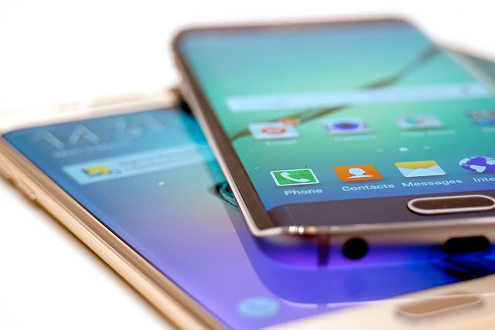
According to the Galaxy S6 and S6 Edge user manuals posted online earlier this month, several new accessibility options will be added to make the devices easier to use for people with blindness or vision impairment, Deafness or hearing loss and reduced mobility.
One of the biggest accessibility updates to the S6 is the addition of Galaxy Talkback, an improved alternative to the Google Talkback screen reader for Android devices. When Galaxy Talkback is activated for the first time, a tutorial on using the new screen reader features is provided automatically.
Talkback settings are customisable, including options to change the voice pitch, configure voice feedback with the screen turned off, add shaking gestures to read text on screen with customisable shake speed, set vibration feedback and proximity sensor support to pause voice feedback when a hand is placed over the screen.
Additional accessibility features include using a three finger swipe to activate a read-aloud contextual menu, as well as the ability to read and add new image labels via gestures.
As with the Galaxy S5, features like direct access will be retained with the S6 model, including the existing vision, hearing and mobility accessibility features.
Galaxy Talkback adds several new finger gestures to improve navigation and usability of the S6 and S6 Edge, with the full list of actions as follows:
One finger gestures
- Tapping: Read aloud the item under your finger. To explore the screen, place a finger on the screen and move it on the screen.
- Tapping twice: Open the selected item. While selected items are read aloud, when you hear the item you want, release your finger from the item. Then, tap anywhere on the screen twice quickly.
- Double-tapping and holding the screen: Move an item or access an available option.
- Swiping to the left: Move to the previous item.
- Swiping to the right: Move to the next item.
- Swiping upwards or downwards: Use the most recent contextual menu option or change its settings. In text selection mode, move the cursor backwards or forwards to select text.
- Swiping to the left then right in one motion: Scroll up the screen.
- Swiping to the right then left in one motion: Scroll down the screen.
- Swiping upwards then downwards in one motion: Move to the first item on the screen.
- Swiping downwards then upwards in one motion: Move to the last item on the screen.
Two finger gestures
- Tapping: Pause or resume voice feedback.
- Tapping twice: Start, pause, or resume playback.
- Tapping three times: Check the current time, remaining battery power, and mode.
- Double-tapping and holding the screen: Enable or disable text selection mode.
- Swiping to the left: Move to the next page. In text selection mode, cut the selected text.
- Swiping to the right: Return to the previous page. In text selection mode, paste the copied text.
- Swiping upwards: Scroll down the list. In text selection mode, copy the selected text.
- Swiping downwards: Scroll up the list. In text selection mode, select all text.
- Swiping in any direction on the locked screen: Unlock the screen.
- Swiping downwards from the top of the screen: Open the notification panel.
Three finger gestures
- Tapping: Start reading items aloud from the top.
- Tapping twice: Start reading from the next item.
- Tapping three times: Read the last selected text and copy it to the clipboard.
- Swiping to the left or right: Open the contextual menu and scroll through the options.
- Swiping upwards or downwards: Change the text reading and selecting granularity.
Samsung’s Galaxy S6 and S6 Edge will be released on April 10, 2015 with Android 5.0.2 Lollipop included at launch.
For more on Android accessibility, you can read Dr Scott Hollier’s hands-on review, impressions and tips for the 5.0 Lollipop operating system, and check out the Android access in 2015 podcast.
You might also like:
- Information on general mobile device accessibility
- Accessibility features for Android devices
- The latest iOS - iPad and iPhone access developments
- Windows phone and Windows tablet accessibility features
- Wearable device access, including Google Glass, Android wear and the Apple Watch
Top of page

